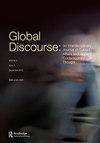Remnants of mutilation in anti-FGM law in Australia - a reply to ‘The prosecution of Dawoodi Bohra women’ by Richard Shweder
IF 1.4
Q2 INTERNATIONAL RELATIONS
引用次数: 2
Abstract
This article examines the absence of discussion about male circumcision in the first legal case against female circumcision in Australia, the Vaziri and Magennis case of 2015, 2018 and 2019, where the High Court of Australia prosecuted three people for practising female circumcision. It engages with the work of Rick Shweder on this case, arguing that what powerfully informs legal cases on this topic in Australia is less anthropological or medical evidence, than antifemale genital mutilation advocacy in the forms of literature and activism. These forms of anti-female genital mutilation discourse, the article argues, obscure the obvious comparison between male circumcision – as a ritual or ceremony that results in the production of a man as a man of God or of the nation – and female circumcision, which is understood as a mutilation. In lieu of the missed comparison, the result of this representation in legal and fictional texts is a rendering of the woman as unable to authorise her own agency, that is, as a remnant of mutilation, a rendering that is far from accurate.Key messagesLegal deliberations on female circumcision would benefit from comparison with the significance of male circumcision.Legal deliberations on female circumcision need to be informed by evidence from circumcised women and less by anti-female genital mutilation activism, which is curated for popular consumption.Positioning circumcised women as mutilated women denies the significant and informed voices of circumcised women who do not experience the practices as mutilation.澳大利亚反女性外阴残割法中的残割残余——对Richard Shweder的《对Dawoodi Bohra妇女的起诉》的回复
本文考察了澳大利亚第一起反对女性割礼的法律案件——2015年、2018年和2019年的Vaziri和Magennis案——中缺乏对男性割礼的讨论,在该案中,澳大利亚高等法院起诉了三名实施女性割礼的人。这本书结合了里克·施维德(Rick Shweder)在这个案件上的工作,认为在澳大利亚,关于这个话题的法律案件中,有力地提供信息的不是人类学或医学证据,而是以文学和行动主义的形式倡导反女性生殖器切割。这篇文章认为,这些形式的反对切割女性生殖器官的言论,模糊了男性割礼和女性割礼之间明显的比较——男性割礼是一种仪式或仪式,导致一个人成为上帝或国家的人——女性割礼被理解为一种切割。在法律和小说文本中,这种表现的结果是将妇女描绘成无法授权自己的代理,也就是说,作为残缺的残余,而代替了错过的比较,这种描绘远非准确。将女性割礼的重要性与男性割礼的重要性进行比较,将有利于对女性割礼的法律审议。对女性割礼的法律审议需要从接受割礼的女性那里获得证据,而不是从反对切割女性生殖器官的活动中获得信息,这些活动是为大众消费而策划的。将割包皮的妇女定位为残割妇女,否认了没有经历残割的割包皮妇女的重要和知情的声音。
本文章由计算机程序翻译,如有差异,请以英文原文为准。
求助全文
约1分钟内获得全文
求助全文
来源期刊

Global Discourse
Social Sciences-Political Science and International Relations
CiteScore
4.10
自引率
6.70%
发文量
64
期刊介绍:
Global Discourse is an interdisciplinary, problem-oriented journal of applied contemporary thought operating at the intersection of politics, international relations, sociology and social policy. The journal’s scope is broad, encouraging interrogation of current affairs with regard to core questions of distributive justice, wellbeing, cultural diversity, autonomy, sovereignty, security and recognition. All issues are themed and aimed at addressing pressing issues as they emerge.
 求助内容:
求助内容: 应助结果提醒方式:
应助结果提醒方式:


